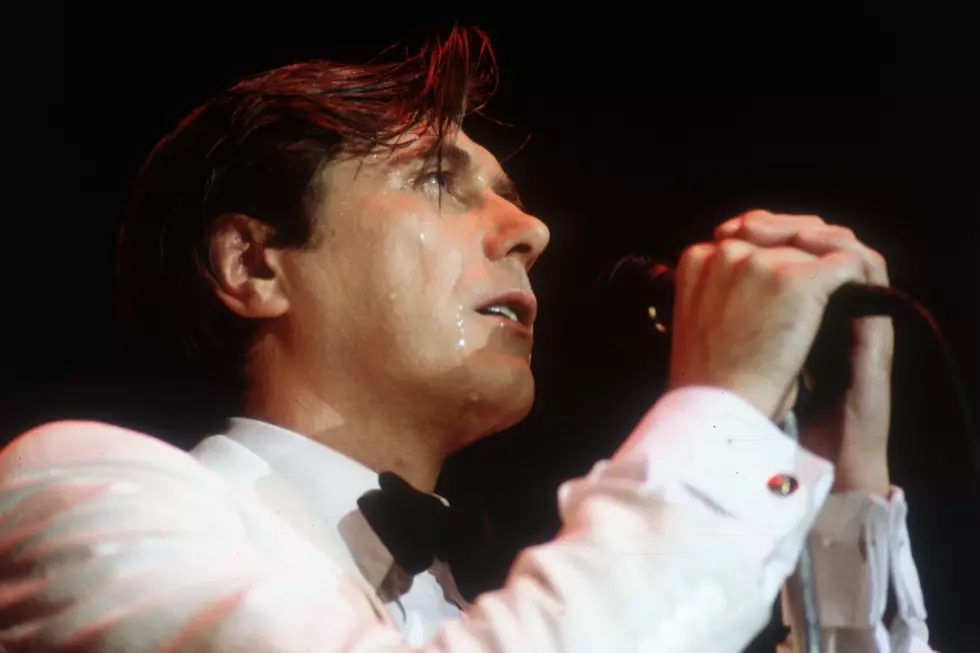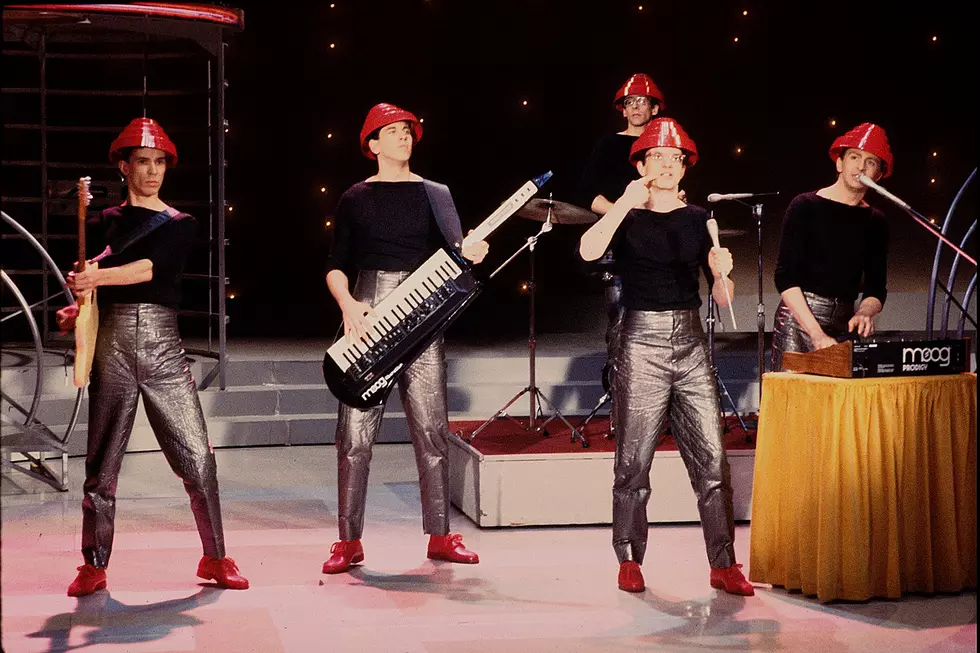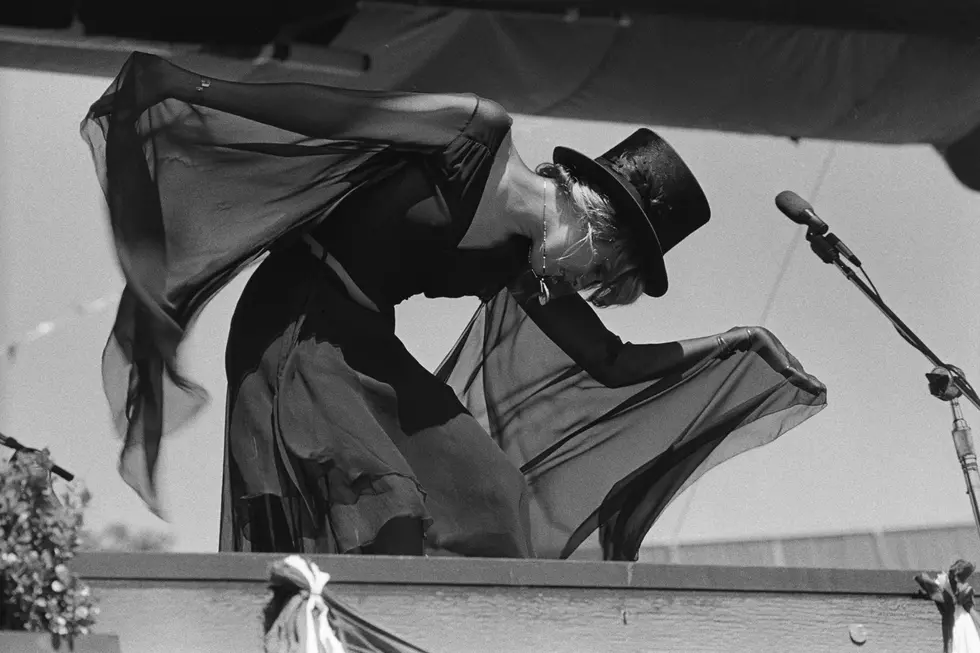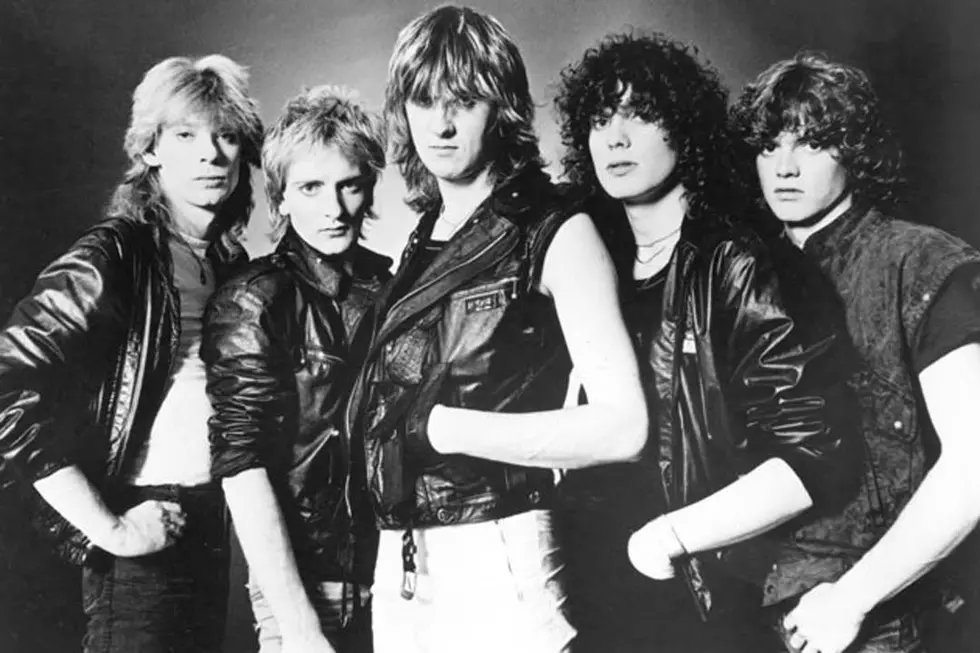
5 Reasons Roxy Music Should Be in the Rock & Roll Hall of Fame
As the patchouli-oiled '60s faded, rock fragmented into a number of subgenres – sparking prog, glam, hard rock and punk, amongst others. Then you had Roxy Music, who arrived with a look and feel like no one else.
They combined elements of glam, but they weren't confined to it. They predicted the era to come while setting a new standard for avant album-cover art, sartorial verve and doomed-lover narratives. Musically, at least during Brian Eno's early tenure, they drew upon the fearlessness of punk, dabbling in wildly inventive music making. (Phil Manzanera originally answered a Melody Maker ad calling for a guitarist who was "original, creative, adaptable, melodic, fast, slow, elegant, witty, scary, stable, tricky.")
Later, reduced to the core trio of singer Bryan Ferry, Manzanera and multi-instrumentalist Andy Mackay, Roxy Music moved into more sophisticated atmospherics, finally finding mainstream success with 1982's Avalon just before splitting apart. A history that combines both innovation and popularity would seem to check every box for a potential Rock & Roll Hall of Fame candidacy.
Yet Roxy Music has been eligible since 1997, and was never even nominated before finally finding a home on the 2019 ballot. That remains one of the most notable snubs. Don't believe us? Here are five reasons why Roxy Music should be in the Rock & Roll Hall of Fame.
They're arguably the first '80s band
Roxy Music's 1972 self-titled debut included a liner-note credit for the stylist who did their clothes, makeup and hair. In other words, the '60s were officially over.
"Everything went flat," Phil Manzanera told the Guardian. "A lot of musicians were getting strung out on heavy drugs. They were out of it, so they weren't even bothering to wear kaftans or other hippie stuff, which had been stylish in their own way."
Not Roxy Music, who were already predicting the next decade's sleek post-modernist materialism. Could MTV have one day existed without them? The New Romantics? Chameleon-like artists including Madonna? Ferry's detached neuroticism on their earliest records opened the door for Devo and Gary Numan. Roxy Music fashion designer Antony Price created Ferry's animal-print jacket and Manzanera’s goggle-eyed glasses, before later working with Duran Duran.
Roxy Music's first U.K. hit "Virginia Plain" provided a quick blueprint for the Cars. Later, Spandau Ballet stole their look to the degree that they should've been charged with grand larceny.
They married experimentalism with pop
Huge fans of the Velvet Underground, Roxy Music also came and went in the blink of an eye, but had a huge impact. More than that, they advanced their heroes' focus on free-form thought and stark minimalism.
"I'd always loved the Velvet Underground," Manzanera told Guitar World, adding that they were "very much about few chords and soundscapes, really, through guitar feedback and things like that."
Manzanera initially ran into Brian Eno at avant-garde concerts, and eventually they shared an apartment. They also discovered a shared passion for systems-music composers like Steve Reich, but nothing shaped their vision for Roxy Music quite like 1967's Velvet Underground & Nico. You hear the Velvet Underground in Paul Thompson's earthy, forceful drumming, too.
"The Velvets used very few chords and the lyrical content was fantastic. They had such charisma and a beautiful siren in Nico," Manzanera told the Sun. "If you could look back at me in Command Studios, Piccadilly, in 1972, you would see a little bubble coming out of my head saying: 'What would they play?'"
Actually, they were a great '70s band, too
Roxy Music debut album might be described today in that most '70s of terms: Progressive rock. Check the track listing, which features two songs that are over six-minutes long ("If There Is Something" and "Sea Breezes") and a multi-part suite titled "The Bob (Medley)" focusing on World War II's Battle of Britain.
"The whole of that first album sounds so weird," Manzanera told the Guardian. "It's such a mish-mash of stuff. Roxy just wouldn't get signed today."
There were more direct prog connections. Before Manzanera took over, Roxy Music was working with guitarist David O'List – formerly of the Nice, a seminal progressive rock band. Ferry actually auditioned for King Crimson, but Robert Fripp decided he wasn't suitable to replace Greg Lake. Still, he was impressive enough that Fripp and Crimson lyricist Pete Sinfield helped get Roxy Music signed with a record label, and Sinfield produced their debut.
Meanwhile, what could be more punk than Eno? A proud non-musician, he started out adding a series of abstract effects via then-new synthesizer technology and weird tape loops – applying outsider-music techniques to somewhat more conventional songcraft.
They never stopped evolving
They started out employing absolutely fearless musical contexts that blended clipped rhythms, a forward-thinking ironic stance and space-age sound effects. Then, after five albums together, Roxy Music shifted gears, re-positioning themselves away from that occasionally abrasive experimentalism toward more stately pop.
"We always felt a great urge to do something different on every album," Manzanera told LouderSound. "Over a period of 10 years, which is what we lasted, it's not easy. The band morphed from one thing to something completely different. It started off very much like a band that played live and that built up its songs in a certain way. It ended up as a studio construct, which was Avalon, which was put together bit by bit, using the studio as an instrument."
They got there gradually, shedding the cutting-edge elements of their work in search of a more accessible, mature sound – while holding true to Ferry's yearning, though still often abstract narratives. It's fitting for a group who began their career with a song titled "Re-Make / Re-Model."
Roxy Music's influence goes way beyond their look
Nile Rodgers has said the funky rhythms created by drummer Paul Thompson and the late bassist John Gustafson for "Love is the Drug" from 1975's Siren inspired him to form Chic. Bryan Ferry's tales of doomed love were a clear catalyst for New Wave, while Eno had a direct impact on the Talking Heads, U2 and Peter Gabriel.
Thom Yorke later covered "Re-make / Re-model," making clear Radiohead's debt to Roxy Music. They bubble up in the music of Ladytron and Imogen Heap, too. Then there are neo-glam bands like Placebo, though Manzanera says their influence is more about attitude.
"Not in the specific sound," the guitarist told the New York Daily News, "but in the fact that they're the masters of their own fate. They do what they like, whether other people like it or not."
Eno later turned to ambient electronic music, hinting at these wide-open soundscapes on 1975's Another Green World then diving headlong into a then-largely unexplored area of music. That connected him thematically again with Steve Reich, and then in the studio with Fripp.
See Roxy Music Among the Top 100 Albums of the '80s
More From Mix 94.1








